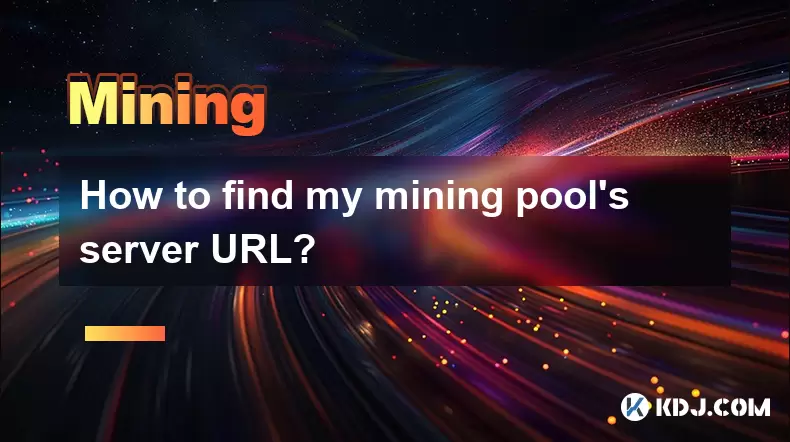-
 Bitcoin
Bitcoin $117,462.8204
-2.03% -
 Ethereum
Ethereum $3,061.1595
1.10% -
 XRP
XRP $2.9139
-2.19% -
 Tether USDt
Tether USDt $1.0002
0.02% -
 BNB
BNB $685.1357
-1.24% -
 Solana
Solana $161.3803
-2.11% -
 USDC
USDC $1.0002
0.04% -
 Dogecoin
Dogecoin $0.1948
-2.92% -
 TRON
TRON $0.2987
-0.89% -
 Cardano
Cardano $0.7330
-1.27% -
 Hyperliquid
Hyperliquid $47.7888
0.13% -
 Stellar
Stellar $0.4514
-2.93% -
 Sui
Sui $4.0169
2.74% -
 Chainlink
Chainlink $15.7088
-2.57% -
 Hedera
Hedera $0.2356
-3.33% -
 Bitcoin Cash
Bitcoin Cash $488.6656
-3.61% -
 Avalanche
Avalanche $21.2955
-1.47% -
 UNUS SED LEO
UNUS SED LEO $9.0415
0.42% -
 Shiba Inu
Shiba Inu $0.0...01332
-0.82% -
 Toncoin
Toncoin $3.0124
-0.62% -
 Litecoin
Litecoin $94.2175
-2.07% -
 Polkadot
Polkadot $4.0011
-0.61% -
 Monero
Monero $333.5714
-3.46% -
 Uniswap
Uniswap $9.1114
-1.56% -
 Dai
Dai $1.0000
0.02% -
 Ethena USDe
Ethena USDe $1.0005
0.00% -
 Bitget Token
Bitget Token $4.4951
1.87% -
 Pepe
Pepe $0.0...01242
0.47% -
 Aave
Aave $321.9943
0.51% -
 Bittensor
Bittensor $434.1984
5.13%
How to find my mining pool's server URL?
A mining pool combines miners' resources to boost block-mining success, requiring the correct server URL for connection and rewards.
Jul 16, 2025 at 12:14 am

Understanding the Concept of a Mining Pool
A mining pool is a collective group of cryptocurrency miners who combine their computational resources over a network to increase the probability of successfully mining a block. When a block is successfully mined, the reward is distributed among the participants based on their contributed processing power. Each miner must connect to the pool's server using a specific server URL, which acts as the entry point for communication between the mining software and the pool’s backend.
To participate in a mining pool, it is essential to know your mining pool's server URL. This URL typically includes the host address and port number required for establishing a connection. Without the correct URL, miners cannot contribute hash power or receive rewards from the pool.
Steps to Locate Your Mining Pool Server URL
- Visit the official website of your chosen mining pool. Most reputable pools display their server URLs prominently on the homepage or under a section labeled “Getting Started,” “Connect,” or “Guide.”
- Log into your account on the mining pool platform. Some pools provide personalized server addresses based on user preferences or regional optimization.
- Navigate to the settings or configuration section within your mining pool dashboard. Here, you will often find pre-configured URLs tailored to different algorithms such as SHA-256, Scrypt, or Ethash.
- Check the documentation or FAQ section provided by the mining pool. These resources frequently include detailed instructions on how to configure mining software with the appropriate server URL.
- If you're still unable to locate the URL, reach out to the support team or consult community forums associated with the mining pool. Many pools maintain active communities on platforms like Reddit, Discord, or Telegram where users can ask questions.
Identifying the Correct Algorithm and Port Combination
Each mining pool may support multiple cryptocurrency algorithms, such as SHA-256 for Bitcoin or Ethash for Ethereum. The server URL often includes both the algorithm-specific domain and the port number used for communication. For example, a typical URL might look like stratum+tcp://pool.example.com:3333.
It is crucial to match the algorithm used by your mining hardware with the corresponding server URL. Mismatched configurations can result in failed connections or no hashing activity being registered. Some pools offer load-balanced URLs that automatically direct miners to the optimal server based on location or current traffic conditions.
The port number at the end of the URL determines which service on the server your miner connects to. Different ports may be designated for different cryptocurrencies or difficulty levels (e.g., standard vs. low difficulty). Always verify the port number matches the one recommended for your setup.
Configuring Mining Software with the Server URL
Once you have obtained the correct server URL, the next step involves configuring your mining software. Popular applications like CGMiner, BFGMiner, or NiceHash Miner require the URL to be entered manually during setup.
- Open your mining software and locate the configuration or settings menu.
- Look for fields labeled “Pool Address,” “URL,” or “Host.” Enter the full server URL here, including the protocol (
stratum+tcp://) if required. - In some cases, the username and password fields are used to identify the miner worker or set custom identifiers. Follow the pool’s guidelines for formatting these fields correctly.
- Save the configuration and restart the mining software to establish a connection with the pool.
- Monitor the logs or console output to ensure that the miner successfully connects to the server URL and begins submitting shares.
Some mining software allows importing configurations via text files or batch scripts, which can streamline the process when managing multiple rigs or setups.
Common Mistakes and Troubleshooting Tips
Misconfigurations are common when entering the server URL manually. One frequent mistake is omitting the port number or entering an incorrect one. Another issue arises when using outdated or deprecated URLs that no longer point to active servers.
Firewall or router settings may also block outgoing connections to certain ports. Ensure that your network allows outbound traffic on the port specified in the server URL. Additionally, check whether your public IP address is blacklisted by the mining pool due to previous misbehavior or spamming.
If the miner fails to connect, double-check the spelling of the URL. Typos in domain names or misplaced characters can prevent successful communication. You may also try pinging the server domain from the command prompt to test basic connectivity.
Frequently Asked Questions
Q: Can I use the same server URL for different mining pools?
No, each mining pool has its own unique server URL. Using another pool’s URL will not work and may result in rejected connections or unauthorized access attempts.
Q: Do mining pools change their server URLs?
Yes, occasionally pools update their server infrastructure, which may involve changing URLs or port numbers. Always check for announcements or updates on the pool’s official channels.
Q: Is there a default server URL for all pools?
There is no universal default server URL. Each pool provides its own set of connection endpoints depending on supported algorithms and server locations.
Q: How do I know if my mining software is using the correct server URL?
Monitor the miner’s console output or log file. Successful connection messages will usually indicate that the miner has accepted work from the pool, confirming the server URL is correct.
Disclaimer:info@kdj.com
The information provided is not trading advice. kdj.com does not assume any responsibility for any investments made based on the information provided in this article. Cryptocurrencies are highly volatile and it is highly recommended that you invest with caution after thorough research!
If you believe that the content used on this website infringes your copyright, please contact us immediately (info@kdj.com) and we will delete it promptly.
- Solana Memecoins Hit the Big Time: PUMP and Sonic Get Coinbase Listing Boost!
- 2025-07-16 06:50:12
- Core Foundation's Rev+: Fueling Ecosystem Growth Through Revenue Sharing
- 2025-07-16 06:30:17
- Ripple, California, and Collaboration: A New Era for Crypto?
- 2025-07-16 06:30:17
- Roman Storm, DPRK Hackers, and Prosecutors: A Tangled Web
- 2025-07-16 06:50:12
- Bitcoin, Altcoins, and DeFi: Navigating the Evolving Crypto Landscape
- 2025-07-16 05:30:12
- DeFi Demystified: Navigating the Wild West of Decentralized Finance
- 2025-07-16 04:50:12
Related knowledge

How are crypto mining profits taxed?
Jul 14,2025 at 12:28am
Understanding Cryptocurrency Mining and TaxationCryptocurrency mining involves validating transactions on a blockchain network and earning rewards in ...

How to keep a mining rig cool
Jul 12,2025 at 01:42pm
Understanding the Importance of Cooling in Mining RigsCryptocurrency mining is an intensive process that places heavy demand on hardware components, p...

Can you mine crypto on a laptop?
Jul 16,2025 at 02:21am
Is It Feasible to Mine Cryptocurrency on a Laptop?Mining cryptocurrency on a laptop is technically possible, but feasibility depends heavily on the ha...

Is crypto mining worth it?
Jul 16,2025 at 01:21am
Understanding the Basics of Crypto MiningCrypto mining refers to the process of validating transactions on a blockchain network by solving complex mat...

How much does it cost to start crypto mining?
Jul 13,2025 at 12:22am
Understanding the Basic Costs of Crypto MiningStarting crypto mining involves several upfront and ongoing expenses. The primary costs include hardware...

What is the most profitable crypto to mine?
Jul 13,2025 at 07:00am
Understanding Mining Profitability in CryptocurrencyWhen evaluating the most profitable crypto to mine, it's essential to consider several factors tha...

How are crypto mining profits taxed?
Jul 14,2025 at 12:28am
Understanding Cryptocurrency Mining and TaxationCryptocurrency mining involves validating transactions on a blockchain network and earning rewards in ...

How to keep a mining rig cool
Jul 12,2025 at 01:42pm
Understanding the Importance of Cooling in Mining RigsCryptocurrency mining is an intensive process that places heavy demand on hardware components, p...

Can you mine crypto on a laptop?
Jul 16,2025 at 02:21am
Is It Feasible to Mine Cryptocurrency on a Laptop?Mining cryptocurrency on a laptop is technically possible, but feasibility depends heavily on the ha...

Is crypto mining worth it?
Jul 16,2025 at 01:21am
Understanding the Basics of Crypto MiningCrypto mining refers to the process of validating transactions on a blockchain network by solving complex mat...

How much does it cost to start crypto mining?
Jul 13,2025 at 12:22am
Understanding the Basic Costs of Crypto MiningStarting crypto mining involves several upfront and ongoing expenses. The primary costs include hardware...

What is the most profitable crypto to mine?
Jul 13,2025 at 07:00am
Understanding Mining Profitability in CryptocurrencyWhen evaluating the most profitable crypto to mine, it's essential to consider several factors tha...
See all articles

























































































